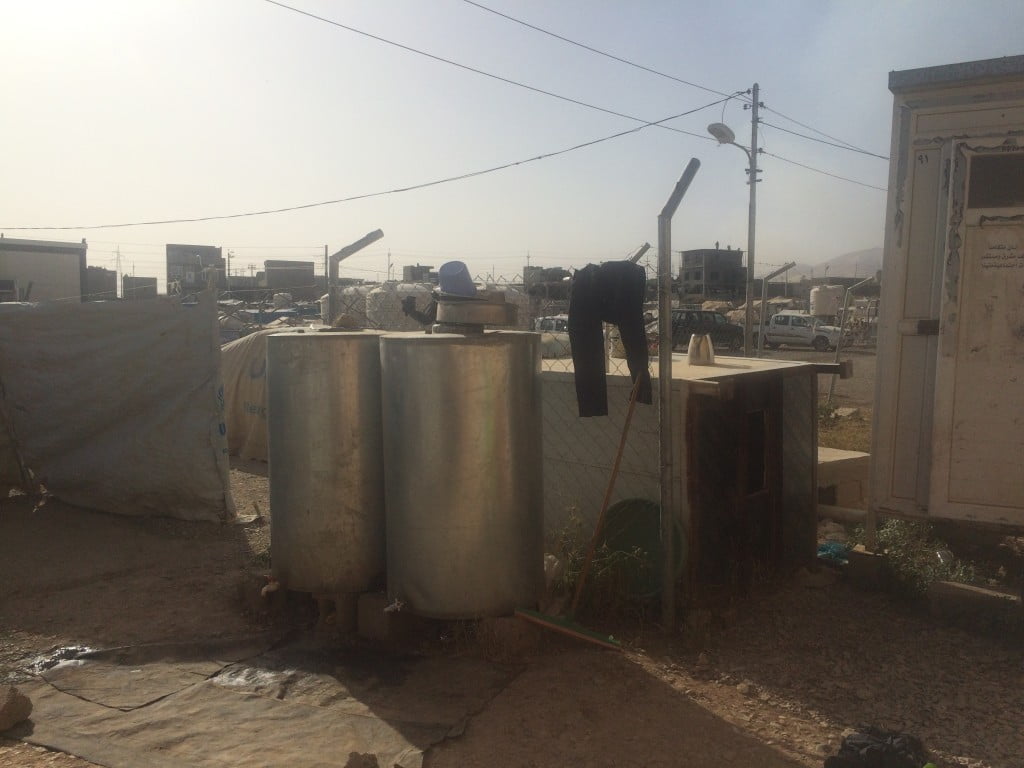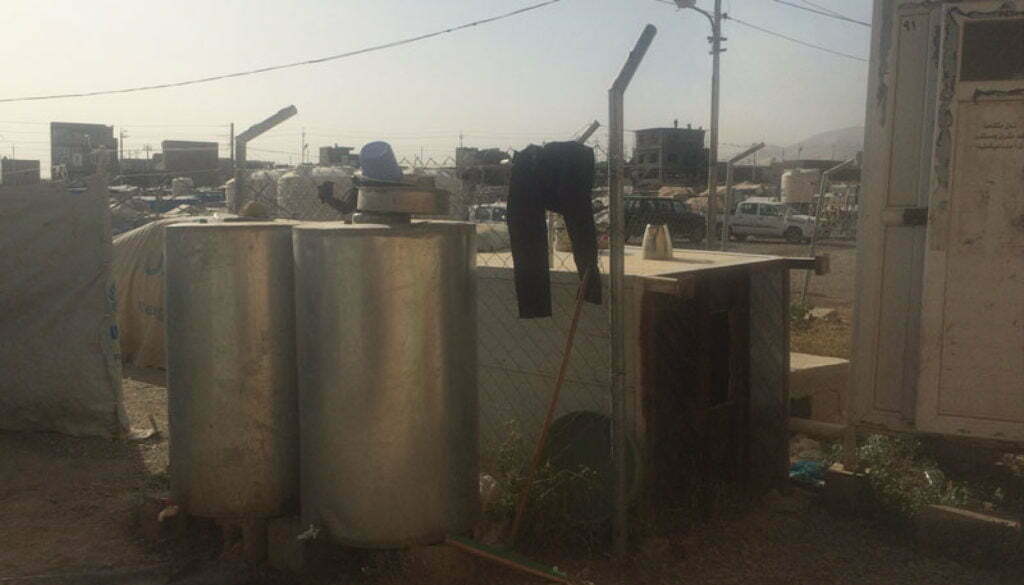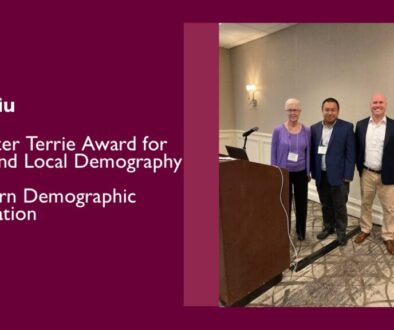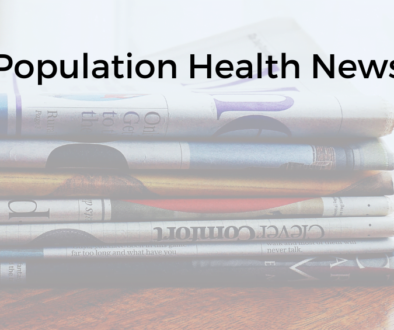Dreams to Nightmares: Food and Health in Communities Displaced by ISIS
Anna Grace TribbleI first visited Iraqi Kurdistan in 2015. An NGO focused on human rights observation was leading delegations to Iraqi Kurdistan to educate the public about realities on the ground in Iraq. During this time, I learned about the health of communities internally displaced by violence from the Islamic State in Iraq and Syria, or ISIS. IDPs (Internally Displaced People), like refugees, are forced from their homes. However, they flee without crossing any international borders. IDPs are even more vulnerable than refugees because they are subject to fewer protections under international law, remain closer to conflict zones, and often lack access to healthcare, food, and other necessities.

That initial visit to Iraqi Kurdistan gave me Ideas for my anthropology dissertation even before beginning my PhD. One particular meeting with the sheikh (leader) of a Yazidi community in a local camp inspired deeper thought. My delegation visited the sheikh in his tent. The NGO partners interviewed him and translated while I sat in and observed. We learned about the family’s experience escaping from Mt. Sinjar and their subsequent life in the camp.
In a small tent, surrounded by his wife and two young daughters, the sheikh recounted the suffering, disease, and death experienced by his people, including many women and children, at the hands of ISIS. In an effort to keep their youngest daughter (maybe 4 or 5 years old) occupied, the sheikh’s wife handed her some crayons. Over the course of our discussion, she sat calmly in the corner doodling a frightening stick figure of an ISIS fighter. Her father explained this behavior using a story that illustrated her new habit of attributing everything grim to ISIS. As he said, “If a bird drops dead from the sky, she will say, ‘ISIS did it.’” This small girl’s behavior exemplified the harsh mental-health realities faced by Kurdish and Arab communities because of war.
A walk around their camp quickly revealed other difficult aspects of life for these people, including problems with income, water, food, and sanitation, all conditions with potentially serious physical and mental health consequences. Moreover, although interviewing displaced people living in camps is useful, it provides only part of the picture of what IDP life is like. Approximately 88% of IDPs in Iraq live outside of camps in informal settlements. Informal settlements can range from abandoned buildings, to incomplete apartment complexes, to camping outdoors. NGOs have difficulty distributing aid in these areas, so IDPs outside of camps have less access to aid and support services. For these reasons, it’s important to extend research on IDP health issues into these settlements, both in urban and rural centers.
I knew I wanted to help document women’s health problems in these communities, but I wasn’t sure where to start. It was also during that first trip that I met Harem Bahaddin M. Amien, who was acting as a translator and later became a friend and eventually my research assistant. In lieu of a trip to the Amna Suraka Museum, Harem offered to give me a tour of the local market and invited me to join his family for the midday meal. It was during this meal, while his mother plied me with dish after delicious dish (even though she had been given no advance notice of my visit), that I realized the important role that food plays in Kurdish and Iraqi culture. Even as a relative stranger, the family was open and forthright in their conversation with me over the meal. Through their conversation and my reflections about the IDP camp, I also began to realize the important role food can play in mental health.

So on my second trip to Iraq in 2016, I began by conducting informal interviews with the intention of developing a clear direction for my work. The primary challenges ranged from guarding against local perceptions that I might be a spy to developing strategies for taking field notes and managing data. Luckily, my research assistant’s local relationships encouraged members of these communities and NGOs to collaborate with me. I was also able to lay the groundwork for partnering with a local college, Sulaimani Polytechnic University.
I quickly learned that food access is one key aspect of life that is disrupted for IDPs. Currently, many NGOs are debating the best way to help IDPs: food aid or cash. Culturally appropriate food aid can act as a buffer, allowing communities to preserve important aspects of their home culture through the day-to-day routines of the kitchen. However, cash aid provides more autonomy for household decision making and encourages displaced people to engage with their new community in the marketplace. Moving forward, I hope to better understand the specific diet of families receiving these different forms of aid, as well as the impact of those diets on mental and physical health outcomes, specifically among Iraqi Arab and Kurdish women displaced by ISIS.
My guiding question is:
“How does the transition from food aid to cash transfers impact food insecurity, mental health, and community cohesion among IDPs and their host communities in rural and urban Iraqi Kurdistan?”
To answer this question, I plan to spend 2.5 of the next 4 years collecting data and building community ties. I will compare internally displaced populations with their Kurdish host population using surveys, interviews, and participant observation. I will look at the way different types of aid influence security and health outcomes in rural agricultural environments vs. city centers. I will approach this research both quantitatively, through food insecurity surveys, and qualitatively, with interviews. This mixed-method approach should help us understand possible mechanisms by which vulnerability and violence become associated with poor chronic health outcomes.
Anthropology has had notable researchers, such as Merrill Singer and Marcia Inhorn, who champion the need to examine population health in conflict zones. However, obtaining funding to study health disparities among IDPs remains a challenge. If more researchers work in conflict zones, then funding organizations could be rallied to better support population-health work done in these “dangerous” research sites. In short, we have the tools to find solutions to chronic health disparities among displaced groups, but we need more researchers working in the field to make this happen.
Resources:
Internal Displacement:
For helpful data related to internally displaced people in Iraq: http://www.internal-displacement.org
Emergency Updates:
For updates on the emergency in Iraq and Syria that include food, health, and other issues: http://reliefweb.int/
Food Security Analysis:
For detailed food security analyses in Iraq: http://www.wfp.org/food-security






April 22, 2017 @ 3:33 am
Anna Grace your research will have such an impact on helping people throughout the world. You are also opening our eyes to the severe conditions people are facing. We are so proud of you!
April 21, 2017 @ 9:57 pm
What an amazing story. I can’t wait for more